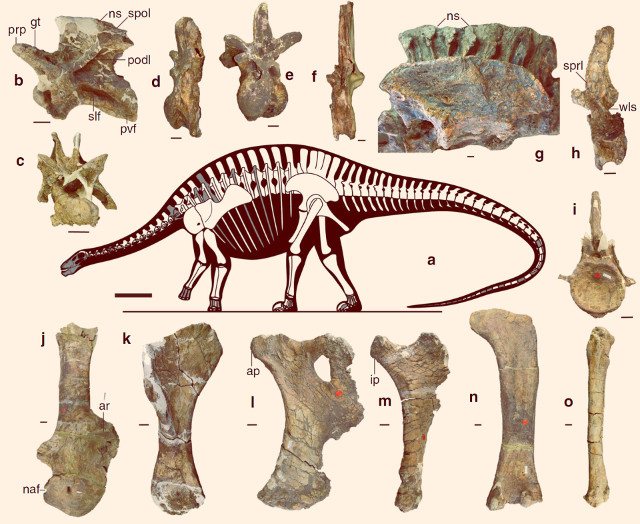
An article published in the journal “Nature Communications” describes the identification of a new species of sauropod dinosaur that lived in today’s China in the Jurassic period, about 174 million years ago. Named Lingwulong shenqi, this animal was classified into the diplodocoid superfamily by the researchers who studied the partial skeletons of a number of specimens found together in 2005. This discovery indicates that these dinosaurs lived in today’s East Asia before the Pangaea fragmented, arriving there at least 15 million years earlier than previously thought.
Diplodocoids (Diplodocoidea) were large herbivorous dinosaurs. This superfamily includes some of the most iconic species such as brontosaurus, which was part of the Diplodocidae family, which had among its features the long neck. However, another family, dicraeosaurids (Dicraeosauridae), had a neck that was less long neck than their cousins’ and Lingwulong shenqi was classified within it.
In 2005, in the Yanan Formation in northwestern China the fossil remains of a group of sauropod dinosaurs of various ages were discovered, from juveniles to adults. The skeletons are all partial but putting together the various bones it was possible to reconstruct these animals’ appearance, which could reach a length of about 15 meters.
The top image (Xu et al, doi: 10.1038/s41467-018-05128-1) shows a silhouette of Lingwulong shenqi’s skeleton where the available bones are in white and around it images of some of the bones available. The bottom image (courtesy Zhang Zongda) shows an artistic representation of the possible appearance of this animal.
The fossil dating of what was called Lingwulong shenqi indicates that the discovered specimens lived about 174 million years ago, when all the current continents were still joined in the Pangaea. Reconstructions of the diffusion and diversification of sauropod dinosaurs suggested that they originated about 200 million years ago. However, a group called neosauropods seemed to have originated much later, some 160 million years ago, to spread across continents towards the end of the Jurassic also reaching today’s East Asia.
Neosauropods (Neosauropoda) include diplodocoids and another family, macronaria, and so far fossils that were less than 160 million years old were found on various continents but not in Asia. The discovery of Lingwulong shenqi shows that 174 million years ago their diffusion and diversification had already reached significant levels.
Dr. Xing Xu of the Chinese Academy of Sciences, among the authors of this study, explained that paleontologists thought that neosauropods hadn’t reached East Asia because it was separated from the rest of the world during the Jurassic period. The discovery of Lingwulong shenqi proves the opposite and the implication is that that region’s isolation was less profound than previously thought.
Once again, China is at the center of a very interesting discovery in the field of paleontology. The years between the discovery of Lingwulong shenqi’s fossils and their adequate study show how sometimes the timescale of this type of research is really long but in the end, sometimes thanks to modern technologies, there can be important progress in the reconstruction of the history of a whole group of organisms.


